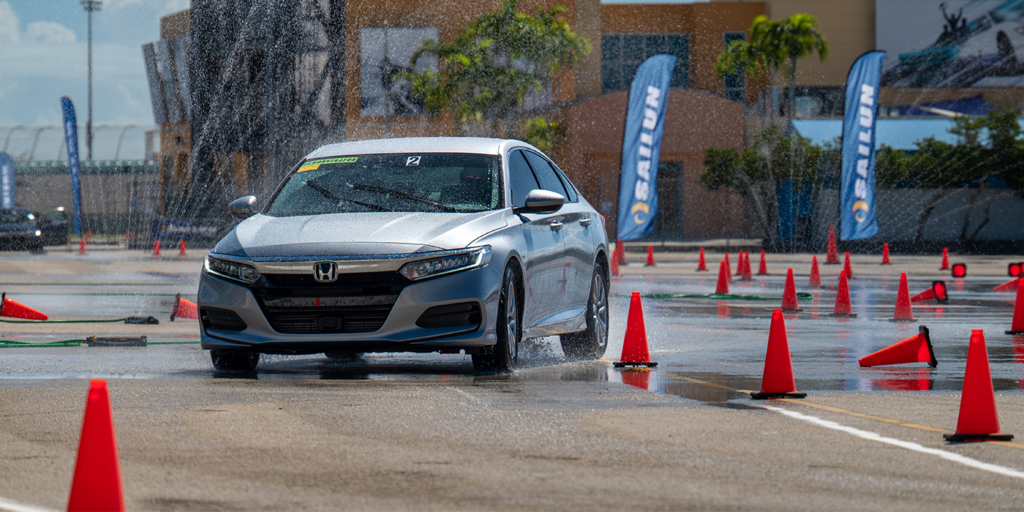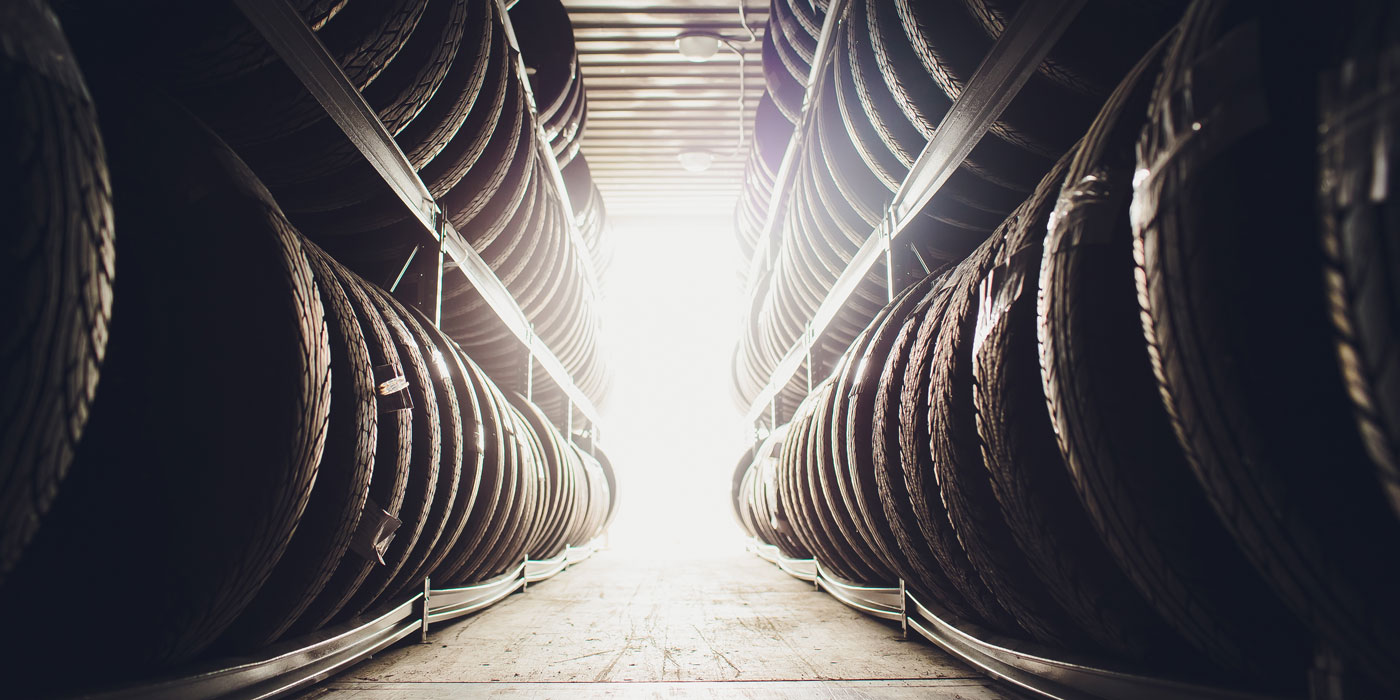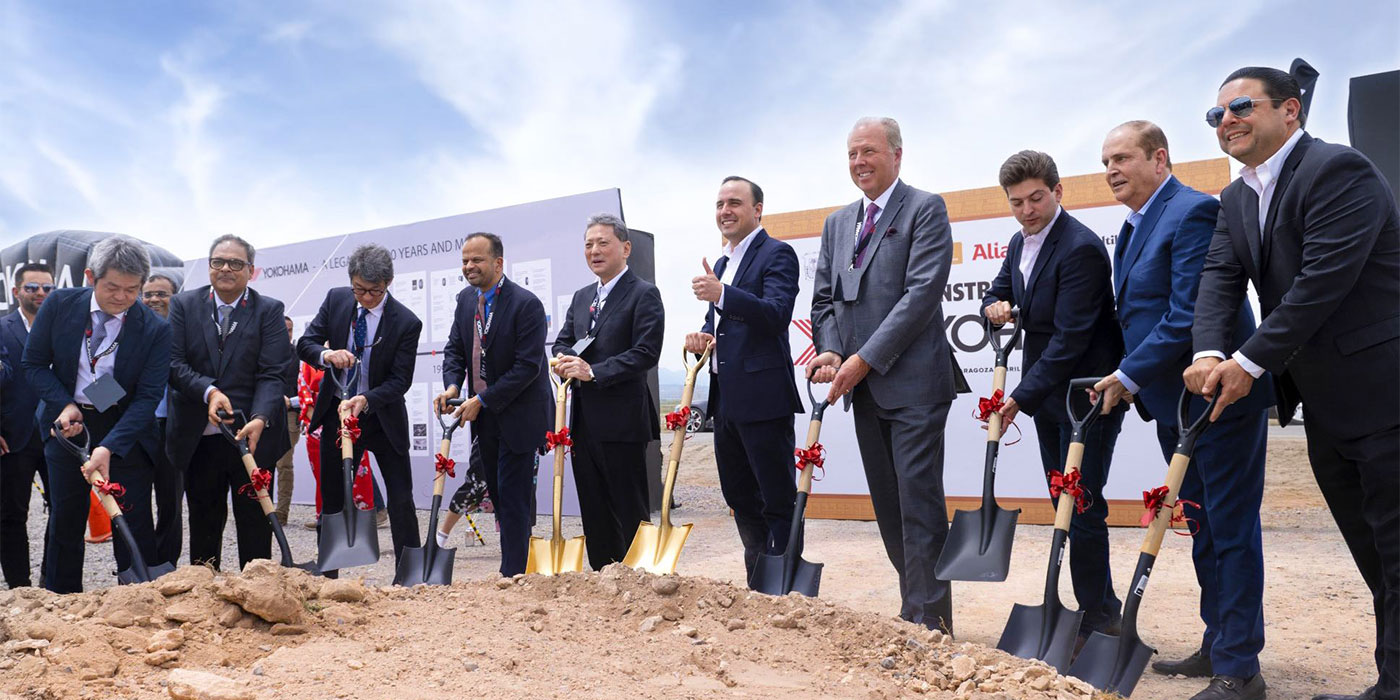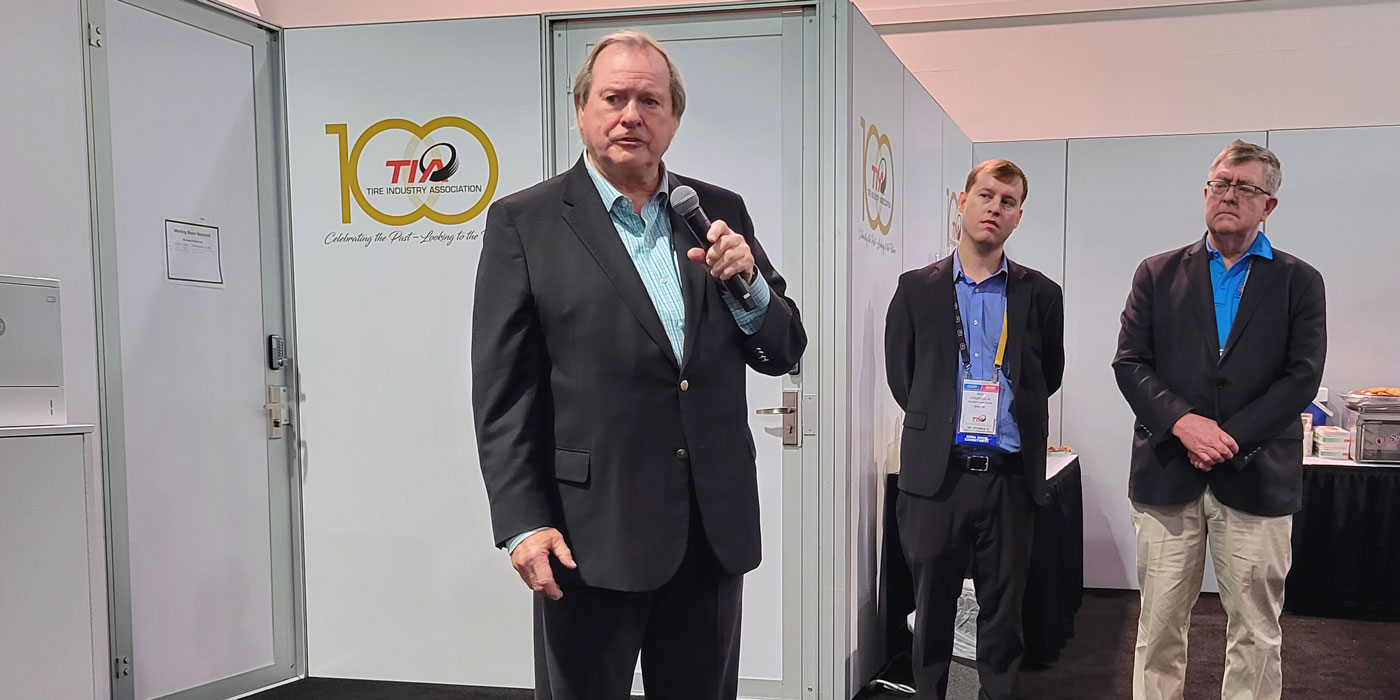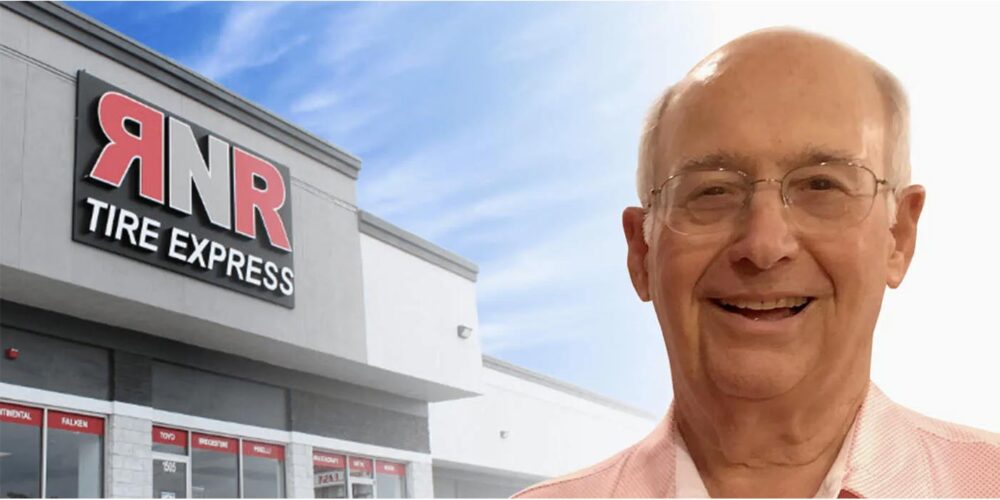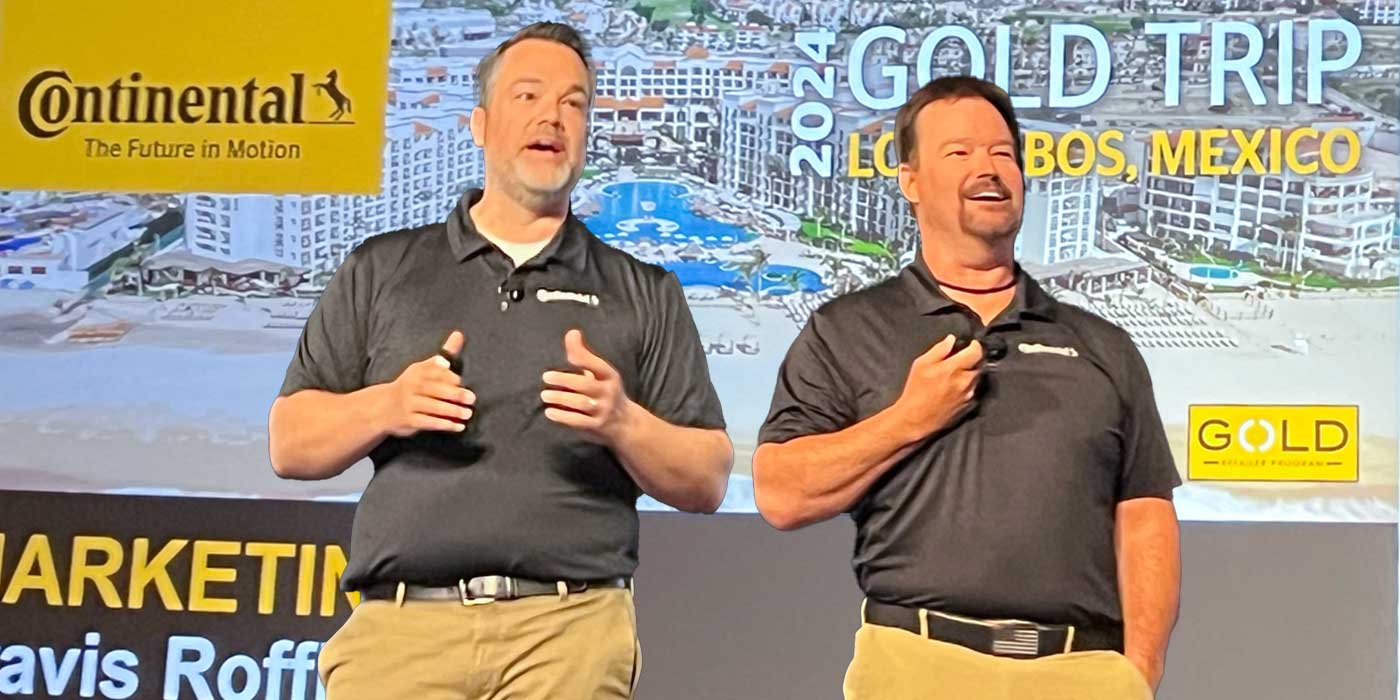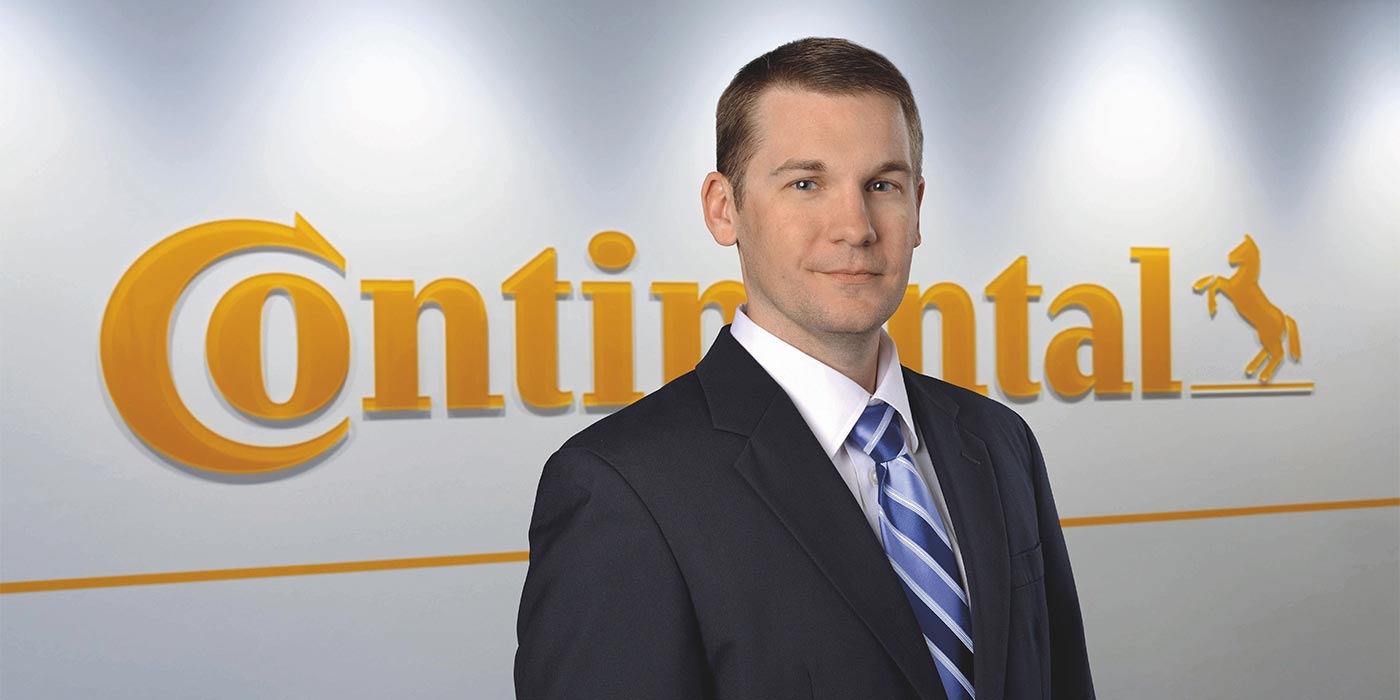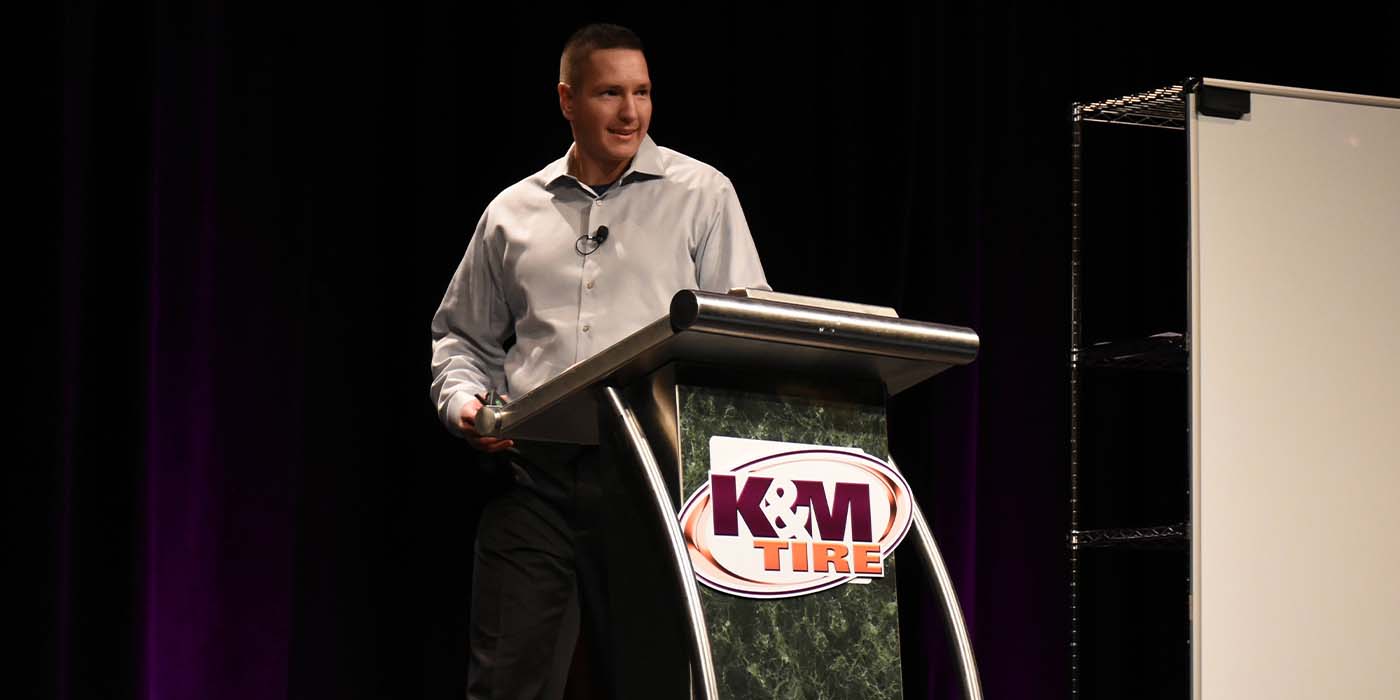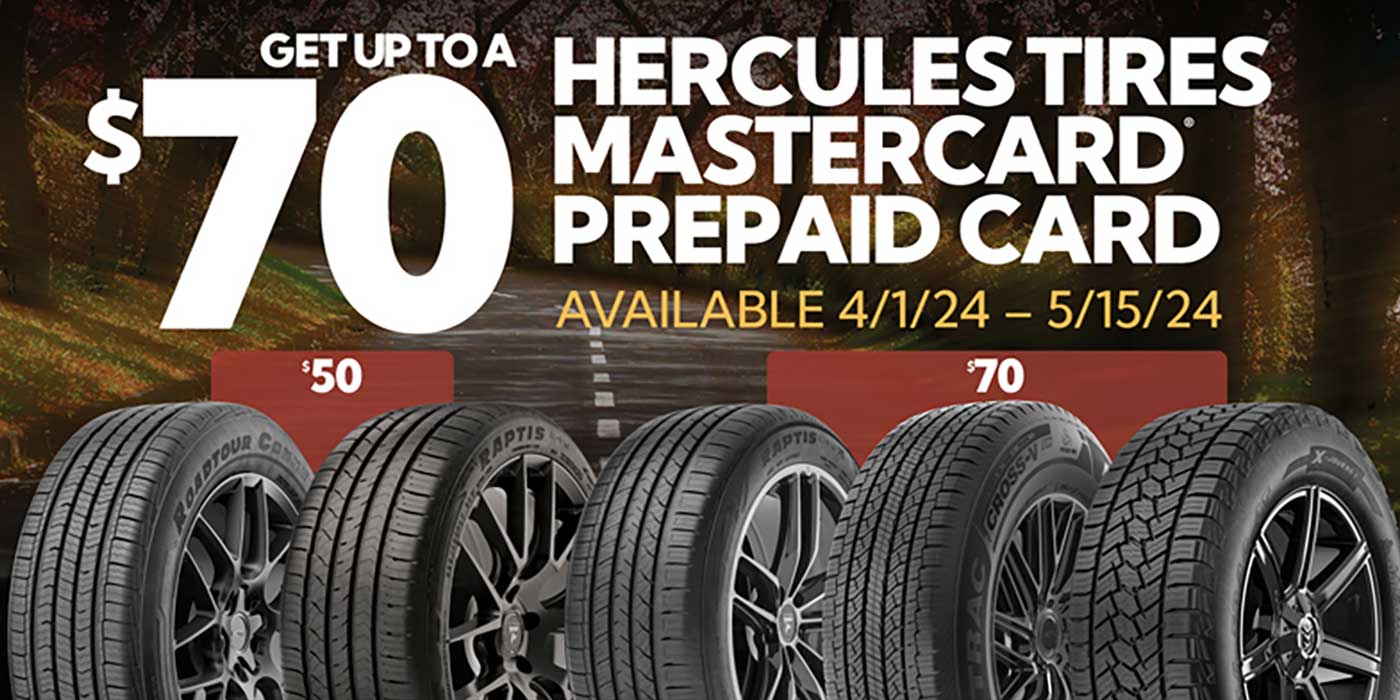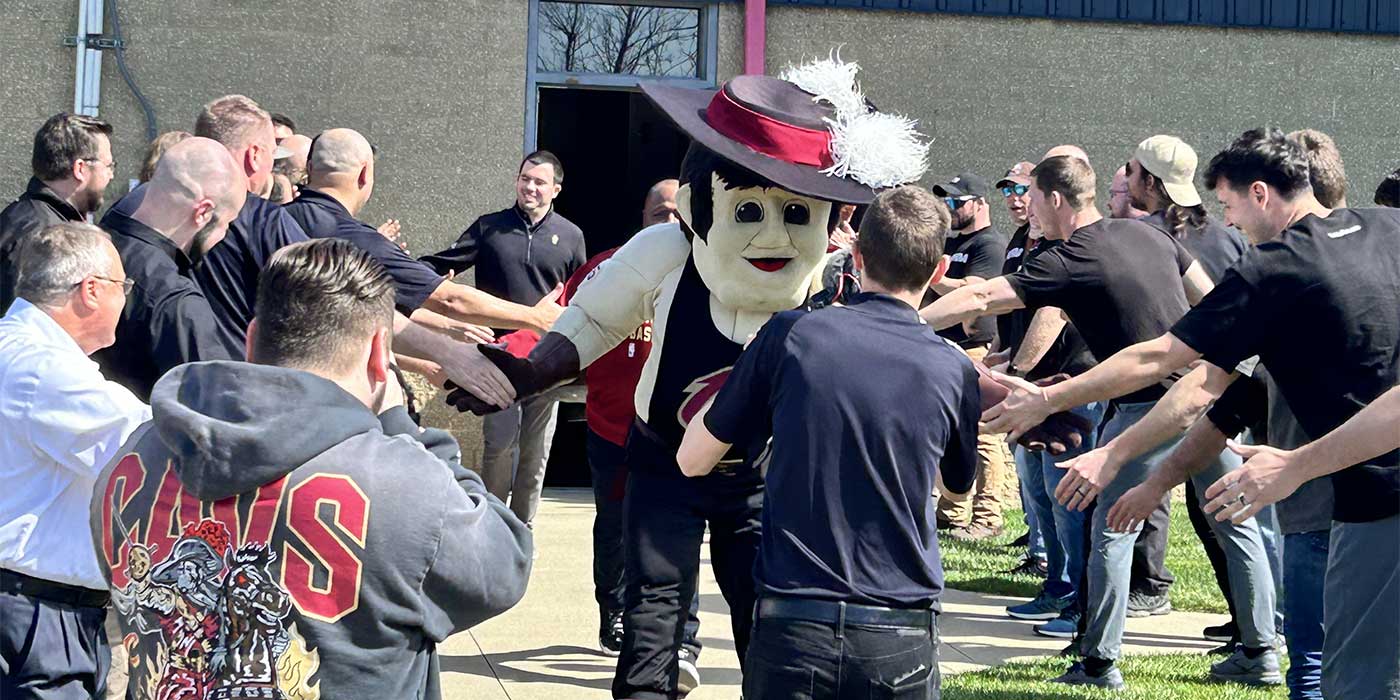Can a Tier 4 tire really meet or exceed the performance of a Tier 1 tire? That was the question posed to dealers during a two-day tire testing event with Sailun Tire Americas at the Homestead-Miami Speedway. This week, the Chinese tiremaker’s North American team invited its dealers and the media out to blind test their tires versus Tier 1 competitors and give dealers a sneak-peek into new product launches to come.
“There’s an incredible amount of opportunity in the value tier. But with that being said, there are still objections that we have to be aware of from customers about poor quality in the value tier and a lack of trust,” said Jared Lynch, director of sales – national accounts (PLT) for Sailun Tire Americas. “We want to prove this wrong. We think that a value tier can still offer quality, trust and support.”
To demonstrate this, Sailun set up a wet slalom and dry slalom course at the speedway to test traction, handling, braking and ride comfort on its tires versus a Tier 1 competitor. Sailun outfitted a Honda Accord with its Inspire all-season touring tire and a Honda CR-V with its Terramax HLT, an all-season highway-terrain tire for light trucks and SUVs. With the sidewalls of both tires scrubbed to not show branding, participants didn’t know which tires they drove on until after the event. However, the tiremaker wasn’t out to prove that their products are better than Tier 1s; rather, the event was meant to showcase that the quality is on par with better-known brands in higher tiers.
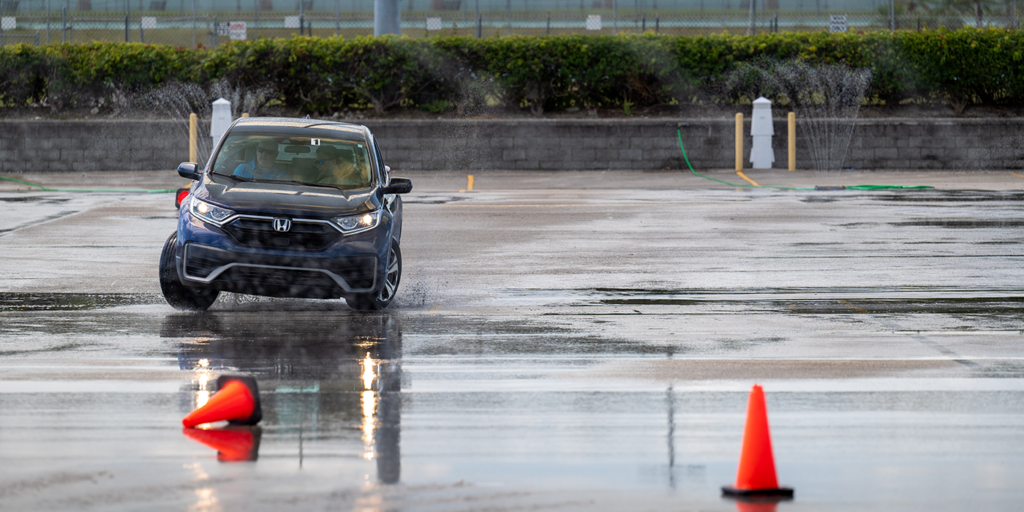
(Photo credit: Jeff Maguire)
“There was no difference at all between one and the other,” said Bryan Zeller, owner of Zeller’s Master Tire with two locations in Evansville, Indiana. “That’s a big win that a Tier 4 performed like a Tier 1.”
Zeller said he has been selling Sailun for around five years now and positions it as the value tier at his tire stores. “We recommend these for the second or third car in the family when they ask for a good quality tire.”
After the day’s tire tests, Russell “Hayes” Morrison of Hayes Tire in Hart County, Georgia, shared similar sentiments as Zeller. “I couldn’t tell a big difference,” he said. “Sailun is the brand that I put on people’s cars when they want a good tire at a good price. I’ll tell them the brand name and they’ll say they’ve never heard of it. I say if they don’t like it, come back and I’ll put new tires on, but they never come back. When they’re ready for their next replacement, I ask if they’ve liked the tires they had on the car, and they always say yes.”
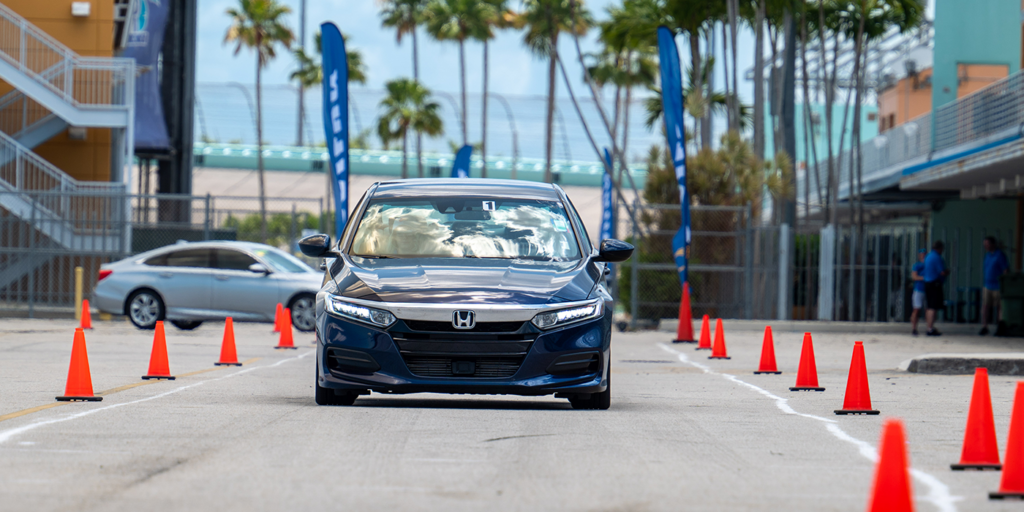
Especially since the pandemic, dealers like these have helped the Tier 4 segment grow. According to data from the U.S. Tire Manufacturers Association, the Tier 4 segment made up about 18% of the replacement tire market last year, which equates to 48 million units, Lynch told participants. He said over the years, Sailun has invested heavily in R&D and manufacturing to put its product on the map. Most recently, the company opened a state-of-the-art, highly automated tire manufacturing facility in Cambodia, which is slated to produce 13 million tires per year when it reaches full capacity late this year.
MORE: Sailun Tackles EV Segment Early with Erange EV Debut
“We’ve been in the industry for 20 years. We’re not a super established brand name in the tire industry. But all of this goes back to our production equipment being high quality,” Lynch says.
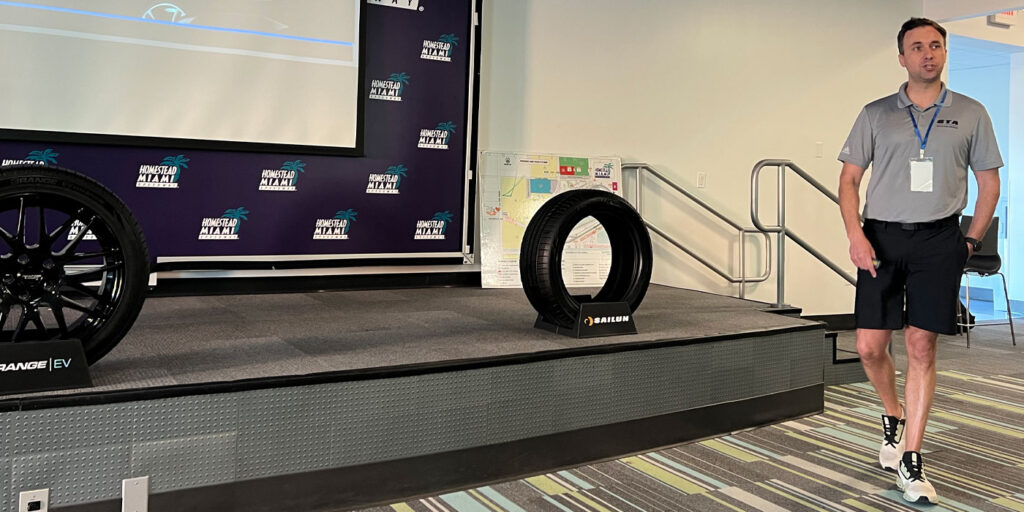
He said Sailun’s quality starts with its R&D centers being in the markets the company serves. The company has three R&D centers throughout the world and most recently opened an R&D Center in Tennessee, to specifically cater to the North American market. In addition, the company formally established a North American business office in Toronto, Canada in the last year.
“We want to be sure we understand this market better than anyone else,” Lynch says.
“This allows us to concentrate on the North American market and our North American consumers and give them the support they need,” says Mark Pereira, director of marketing. “The difference is now we have a division with North American employees that’s solely focused on developing products exclusively for the North American market.”
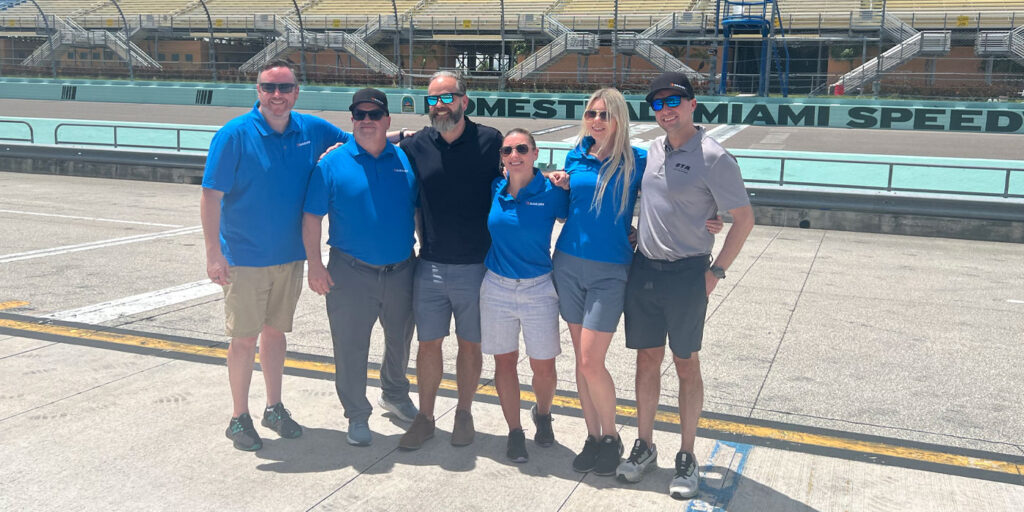
Products to Come
During the ride-and-drive, Sailun staff gave dealers a peek at tires that the company is working on and will release within the coming years–the crown jewel of them being its Erange EV tire. The Erange EV uses proprietary Sailun Ecopoint 3 liquid phase mixing technology, which allows for better rolling resistance and longer-lasting treadlife, says Lynch.
The tire, which will come in 32 sizes and cover 80% of the EV and hybrid market today, will start production in Q3 of this year and be available for dealers to order in around the end of the year.
For more on the technology of this tire and its significance to the Sailun brand, click here.
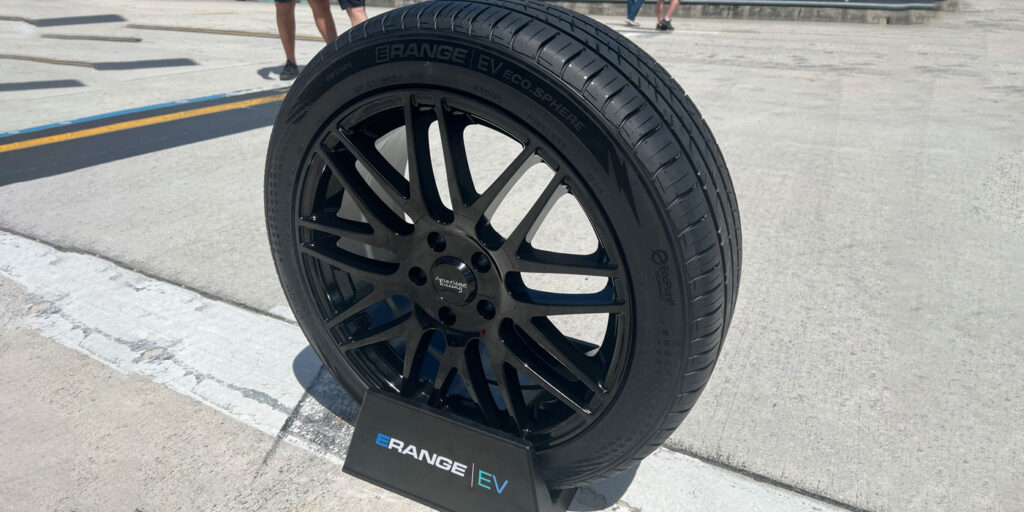
Other tires that the company is working on specifically for the North American market include the Terramax HLT-C, an all-season light truck and SUV tire that covers 97% of the last-mile delivery segment with seven sizes. Lynch said the pattern is based on the company’s Terramax HLT, with enhancements in its tread pattern to reduce road noise, traction and handling and also maximize the tire’s weight-carrying capabilities.
“It’s no shock that eCommerce is continuing to build,” said Lynch, saying that the U.S. Census predicts it will exceed $1 trillion in 2022. “[Tires for last-mile delivery vehicles] take unique load ranges and tire sizes.”
Next, Lynch reviewed the SH408, an all-season tire, that has an opening price point and promises wet, ice and snow traction. The tire is slated to come in 56 sizes ranging from 13- to 18-inches. Production is slated to start in September on the tire and be available for dealers to order next January.
Finally, Lynch revealed the company is working on a rugged-terrain tire with the Terramax R/T, which will come with a three-peak mountain snowflake certification. Featuring an aggressive tread pattern, the R/T will come in 32 sizes with 10 sizes in the F-load range.
“We know that the electrified trucks coming out in the future are going to be heavier and need higher load ratings, so we are beating them to the punch by already incorporating a 12-ply load rating and sizes that we anticipate those vehicles to use.”

